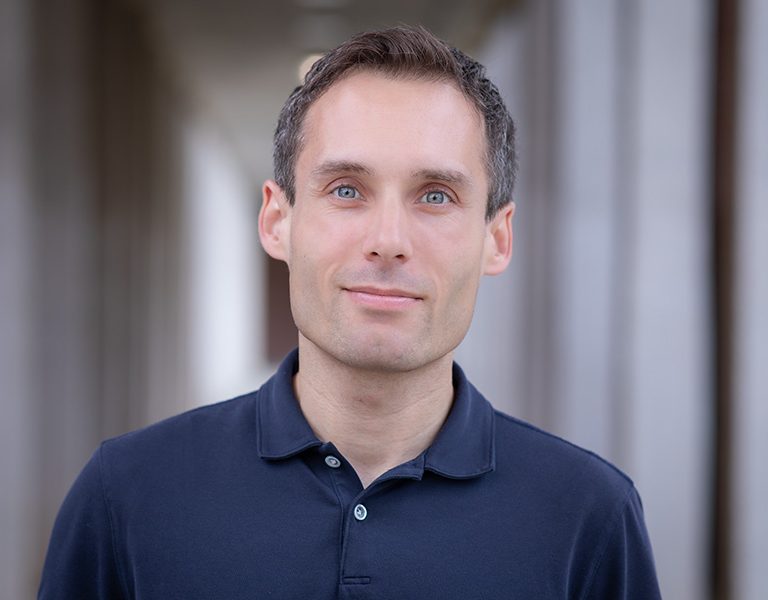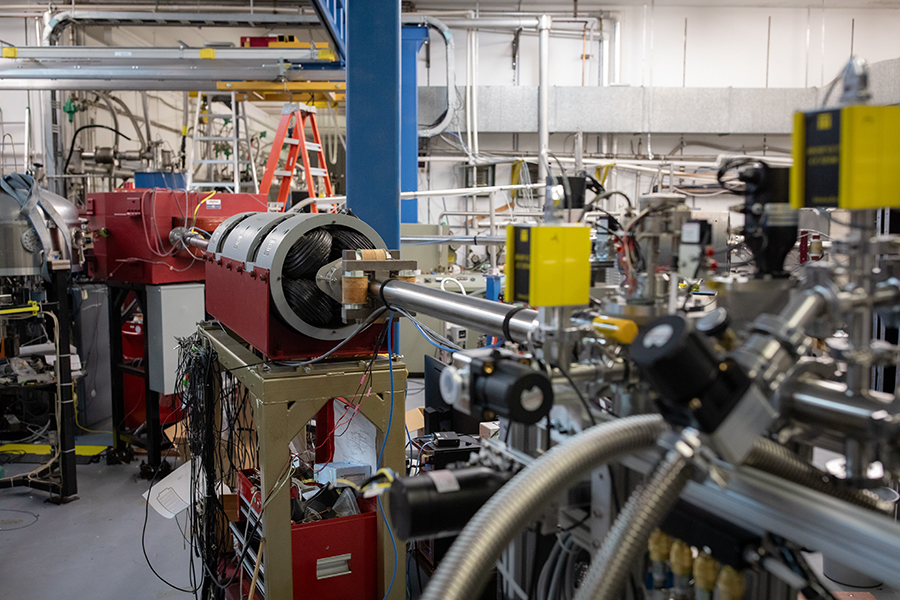FSU physics lab awarded NSF grant to enhance particle and nuclear physics research, power student experience

The Florida State University low-energy nuclear physics lab has received new funding from the National Science Foundation to improve the investigation of atomic nuclei and to perform experiments studying nuclear-structure phenomena, which influence the reactions in explosive stellar scenarios that form the chemical elements in our universe.
The John D. Fox Superconducting Linear Accelerator Laboratory and its collaborators at Ursinus College and Ohio University will use the $721,072 grant to add nine additional detectors to its current array of cerium bromide gamma-ray detectors, paving the way for more groundbreaking experiments and collaborative physics research with other institutions.

“Light emitted from atomic nuclei, which we call gamma rays, is undetectable by the human eye, so our research requires extremely sensitive equipment,” said Mark-Cristoph Spieker, assistant professor of physics and Fox Lab researcher. “The bigger the detector, the more sensitive it is in identifying higher-energy gamma rays, which is very relevant for nuclear astrophysics. Several national laboratories are also quite interested in using this new instrument, which we call CeBrA for cerium bromide array, alongside our large-acceptance magnetic spectrograph. I expect that this grant will help us make new discoveries and establish new collaborations with laboratories and universities.”
The cerium bromide detectors of CeBrA will be tested and characterized by Ursinus College professor of physics Lew Riley, a two-time FSU nuclear physics alumnus, and his lab of student researchers before coming to FSU. Riley conducted research at the Fox Lab during his master’s and doctoral studies.
This exchange provides a unique opportunity for Ursinus students to work with modern spectroscopy techniques and instruments at their home institution before potentially traveling to use them after their installation at the Fox Lab.
The grant also will support an ongoing summer Research Opportunity for Undergraduate (REU) students that allows students studying at four-year institutions without nuclear science research opportunities, like Ursinus College, to gain experience at the Fox Lab with their research adviser for several weeks. Riley, who earned his master’s from FSU in 1995 and his doctoral degree in 1997, has accompanied undergraduate physics researchers to participate in this REU for the past six years.
“This allows my students to get hands-on experience and be directly involved in all parts of the research process, from the assembly of the instrument to the conclusion of an experiment,” Riley said. “It’s important for them to see what the lab is like, and students develop a lot of transferable skills while doing experimental work and dealing with data analysis in an environment like the Fox Lab.”


Once the CeBrA gamma-ray detectors are assembled at FSU, they will be used for particle-gamma coincidence experiments in conjunction with the FSU Super Enge Split-Pole Spectrograph (SE-SPS), which allows for a detailed characterization of excited states in atomic nuclei.
Assistant professor of physics at Ohio University Andrea Richard, another grant collaborator, will also use the grant to travel to FSU and conduct nuclear astrophysics experiments with the combined CeBrA+SE-SPS system. Within the scope of the grant, a simulation of the detector setup will be developed by Ursinus College students and a postdoctoral researcher at Lawrence Livermore National Laboratory in California.
“For decades, our lab has attracted visiting scientists from around the nation and beyond, and the combination of the new cerium bromide detectors with our excellent magnetic spectrograph will attract even more,” said Paul Cottle, associate chair of the Department of Physics and professor of physics. “Both the new detectors and the scientific results they will yield will significantly add to the Fox Lab’s already impressive decades-long legacy. The NSF has tremendous confidence in the ability of Fox Lab scientists, especially Mark Spieker and our alumnus Lew Riley, to deliver nuclear physics results at the intellectual frontier.”
The combined setup used to observe various aspects of nuclear structure is quite advanced and one rarely seen in university labs. Working at the Fox Lab gives students, both undergraduate and graduate, a strategic advantage in learning these techniques at an early stage before moving on in their careers.
“I’m very happy to see that the scientific community acknowledges that we’ve done some really great work here at FSU and that the instrument should be built here,” Spieker said. “Not only are we going to see things we haven’t seen before, but we can also revisit open questions that researchers have been trying to answer for decades.”
To learn more about the Fox Lab and nuclear physics research at FSU, visit fsunuc.physics.fsu.edu. For more about FSU’s Department of Physics, visit physics.fsu.edu.

